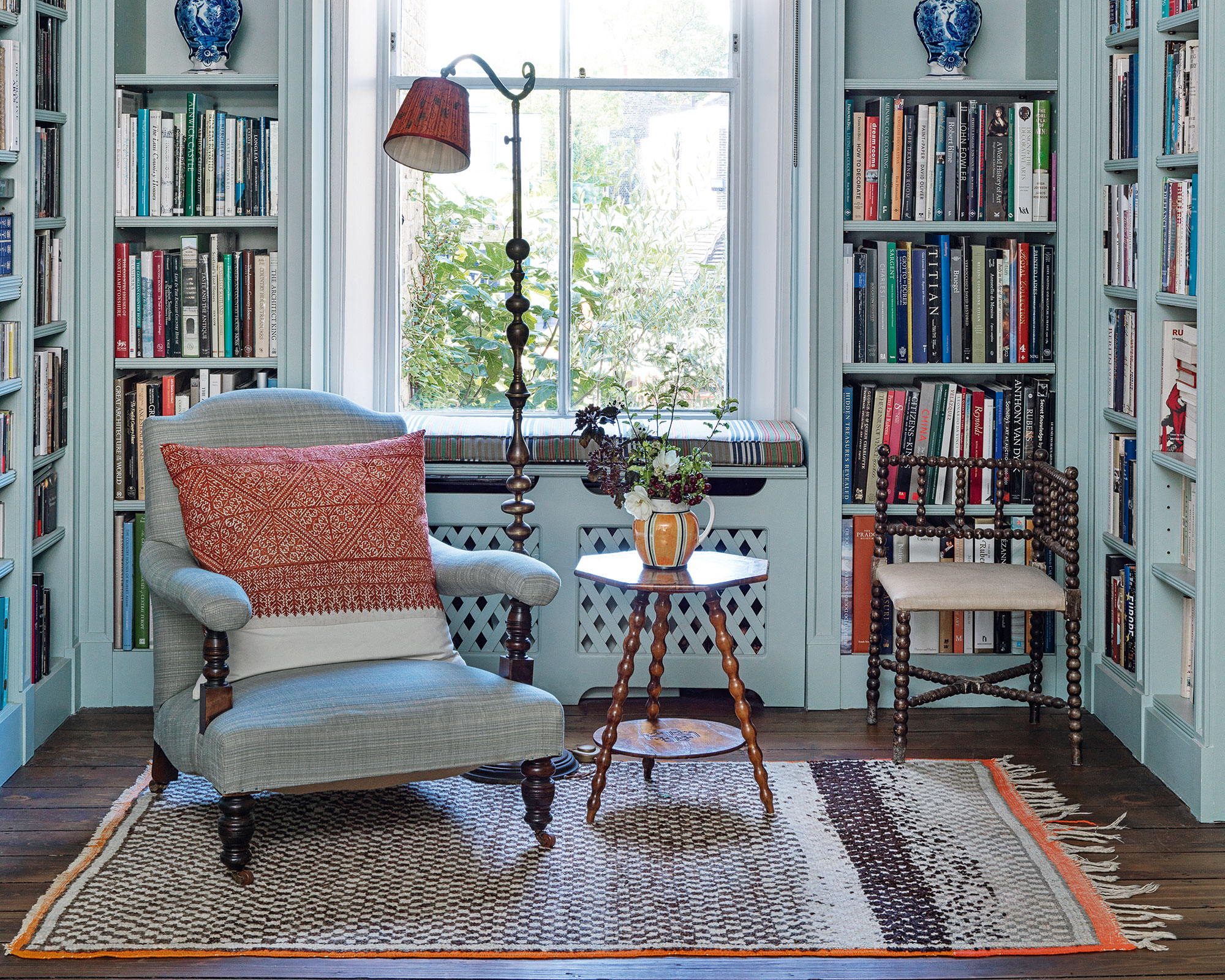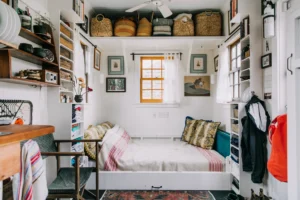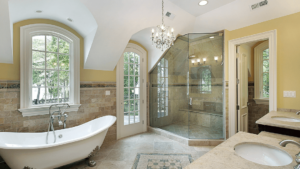Imagine having a little corner in your home where you can escape into the pages of your favorite book, a place that is all your own, designed specifically for comfort and relaxation. Even if you have a small space, creating a reading nook can be simple and incredibly rewarding.
With the right ideas, any small area—whether it’s an unused corner, a window ledge, or a narrow hallway—can be transformed into a cozy reading spot that feels like a personal sanctuary.
This guide will walk you through various creative and practical ideas for setting up a reading nook in small spaces, focusing on comfort, functionality, and aesthetics.
From selecting the perfect chair to choosing the best lighting, every detail counts in crafting a space that invites you to sit back, relax, and immerse yourself in a good book.
1. Choosing the Perfect Location
The first step in creating a reading nook is finding the right location. In a small space, this might mean getting creative with areas that are currently underutilized. Consider corners of rooms, spaces under staircases, or even areas next to windows. A quiet spot with some natural light is ideal, but even a darker corner can be transformed with the right lighting.
- Corners and Alcoves: Use an unused corner or an alcove to create a snug spot. You can place a small chair, a few cushions, and a side table to make the space inviting.
- Window Seats: If you have a bay window or a ledge, consider turning it into a window seat with some comfy cushions. This not only saves space but also provides natural light, which is perfect for reading during the day.
- Under Stairs: The space under a staircase is often overlooked but can be a great place for a compact reading nook. A small bench, a few cushions, and a reading lamp can make this area cozy and inviting.
2. Selecting Comfortable Seating
Comfort is key when creating a reading nook, especially in a small space. Choose seating that fits well within the area you have and suits your style.
- Compact Armchairs: Opt for a compact armchair that provides support without taking up too much space. Look for chairs with a slim profile and comfortable cushions.
- Built-in Seating: If space is very limited, consider built-in seating like a window bench. This can provide a cozy seat without occupying extra floor space.
- Floor Cushions or Poufs: For a more informal and flexible setup, consider using oversized floor cushions or poufs. These can easily be moved around and stored away when not in use.
3. Incorporating Soft Textures
A reading nook should feel like a warm, inviting place where you can easily lose yourself in a book. Adding soft textures will enhance comfort and create a soothing environment.
- Throw Blankets and Cushions: Use soft throw blankets and a variety of cushions in different sizes and fabrics to create a layered look. Choose materials like wool, faux fur, or soft cotton for a comfortable feel.
- Rugs: Adding a small rug can help define the nook and make it feel cozier. Consider a fluffy or textured rug that adds warmth to the area, especially if you have hard floors.
4. Optimal Lighting for Reading
Good lighting is essential for any reading space, especially in a small area that might not get a lot of natural light.
- Task Lighting: Choose a good reading lamp, either a floor lamp or a table lamp, with adjustable brightness. A lamp with a flexible neck can direct light exactly where you need it.
- Ambient Lighting: If your reading nook is in a darker corner, consider adding some ambient lighting. Fairy lights or wall-mounted sconces can provide a gentle, diffused light that creates a cozy atmosphere.
- Natural Light: If your nook is near a window, make the most of the natural light during the day. Light, airy curtains can help diffuse sunlight, making it softer on the eyes while maintaining privacy.
5. Utilizing Vertical Space
When working with small spaces, think vertically. Walls can provide storage and decorative opportunities to enhance your reading nook.
- Shelving Units: Install floating shelves or wall-mounted bookcases to store books and display decorative items. This keeps the area organized and makes good use of vertical space.
- Hanging Plants: Hanging plants or wall-mounted planters can add a touch of greenery and make the nook feel more inviting. Choose low-maintenance plants that thrive indoors, such as pothos or spider plants.
- Wall Art: Add a piece of art or a framed quote that inspires you. This can personalize your nook and make it feel like a special retreat.
6. Maximizing Storage
Storage is crucial in small spaces. Your reading nook should have just enough storage to keep your essentials without making it feel cluttered.
- Side Tables with Storage: Choose side tables or stools that come with storage options, like drawers or shelves. These can hold books, a reading journal, or a cup of tea.
- Baskets and Bins: Woven baskets or fabric bins can be placed under a chair or beside it to store blankets, magazines, or even more books.
- Built-In Storage: If you’re building a custom nook, consider incorporating built-in storage under benches or seats. This can provide a space for storing books, blankets, and other reading essentials.
7. Adding Personal Touches
Make your reading nook a reflection of your personality by adding elements that bring you joy and comfort.
- Favorite Books: Display some of your favorite books on a nearby shelf or stack them on a small side table. This not only adds a personal touch but also makes them easily accessible.
- Decorative Accents: Add a small piece of decor, such as a vase with fresh flowers, a scented candle, or a small sculpture. These details can make the space feel more special.
- A Small Table for Essentials: A small table can hold your reading glasses, a cup of coffee, or a notepad for jotting down thoughts or quotes.
8. Creating a Calm Atmosphere
The atmosphere of your reading nook should promote relaxation and concentration. Consider elements that can enhance tranquility.
- Aroma and Scents: Use a diffuser or scented candles with calming scents like lavender or eucalyptus to create a soothing environment.
- Sound Elements: If you enjoy a bit of background noise, consider a small water fountain or a white noise machine to block out distracting sounds.
- Color Palette: Stick to a calming color palette, such as pastels, neutral tones, or earth colors. These hues can help create a peaceful environment that encourages reading.
9. Making the Most of Small Spaces
Small spaces can be made to feel larger and more inviting with a few clever tricks.
- Mirrors: Use mirrors to create the illusion of more space. A strategically placed mirror can reflect light and make the nook feel more open.
- Light Curtains: If your nook is by a window, use light-colored curtains to maximize the feeling of space and keep the area bright and airy.
- Minimalist Design: Keep the design simple and uncluttered. Choose furniture and decor that serves multiple purposes, like a stool that doubles as a side table or a lamp with built-in storage.
10. Experimenting with Multifunctional Furniture
In small spaces, every piece of furniture should earn its keep by serving more than one function.
- Convertible Furniture: Look for convertible or folding furniture that can be stowed away when not in use. A folding chair or a drop-leaf table can provide flexibility and save space.
- Ottomans with Storage: An ottoman that doubles as a storage unit can serve as extra seating or a footrest while hiding away items like blankets or books.
- Wall-Mounted Desks: If your reading nook also serves as a workspace, consider a wall-mounted desk that can fold up when not in use.
11. Incorporating Technology
If you enjoy listening to audiobooks or reading on an e-reader, consider adding some tech-friendly elements to your reading nook.
- Charging Stations: Install a small charging station or keep a power strip nearby for charging your devices.
- Bluetooth Speakers: A small, portable Bluetooth speaker can be used to play soft background music or audiobooks.
12. Keeping it Flexible and Adaptable
Your reading nook should be a versatile space that can adapt to your changing needs.
- Moveable Furniture: Opt for lightweight, moveable furniture that can be rearranged easily. This allows you to change the setup based on your mood or the season.
- Seasonal Decor: Change the decor according to the season. Swap out heavier blankets for lighter throws in summer, or add holiday-themed decorations during the festive season.
13. Maintaining a Clutter-Free Zone
A clutter-free space promotes a clear mind, which is ideal for reading.
- Regular Decluttering: Make it a habit to regularly declutter your reading nook. Remove items that don’t belong or that distract you.
- Storage Solutions: Use storage solutions that fit your space and style, like baskets, bins, or built-in shelves, to keep the area tidy and organized.
14. Enjoying Your Reading Nook
Once your reading nook is complete, make it a habit to use it regularly. Set aside time each day or week to retreat to your nook, unwind, and enjoy some quiet reading time. Remember, the goal is to create a space that feels uniquely yours, so don’t hesitate to make changes as your preferences evolve.
Creating a cozy reading nook in a small space is all about finding the right balance between functionality and comfort. By carefully selecting each element, from seating and lighting to storage and personal touches, you can create a delightful retreat that invites you to relax, recharge, and get lost in a good book.




